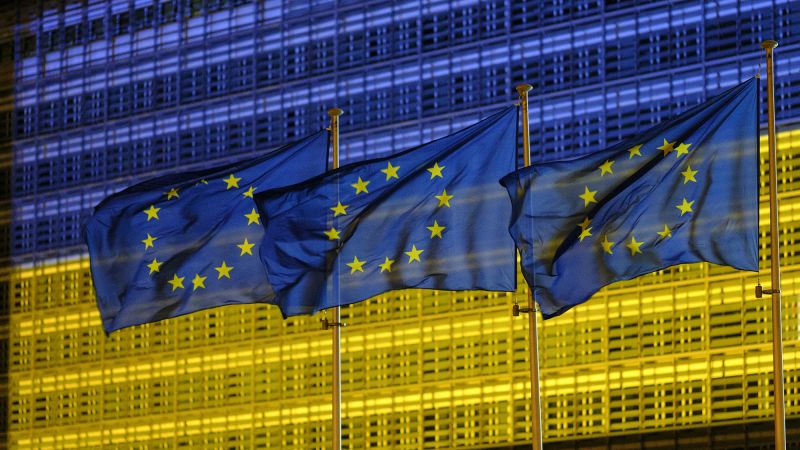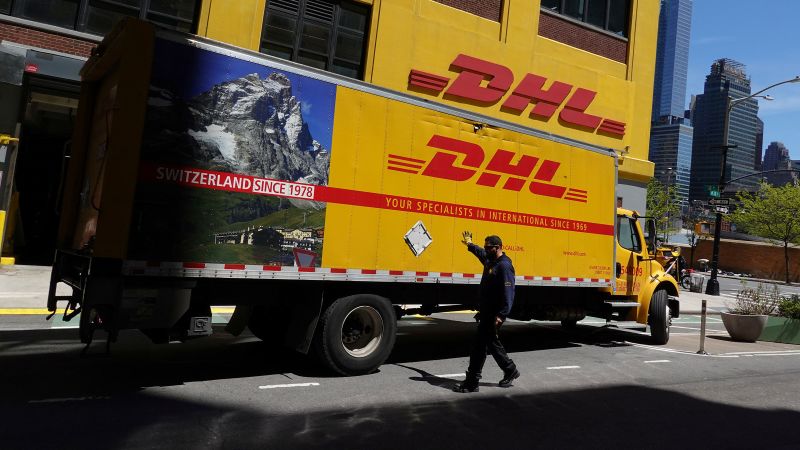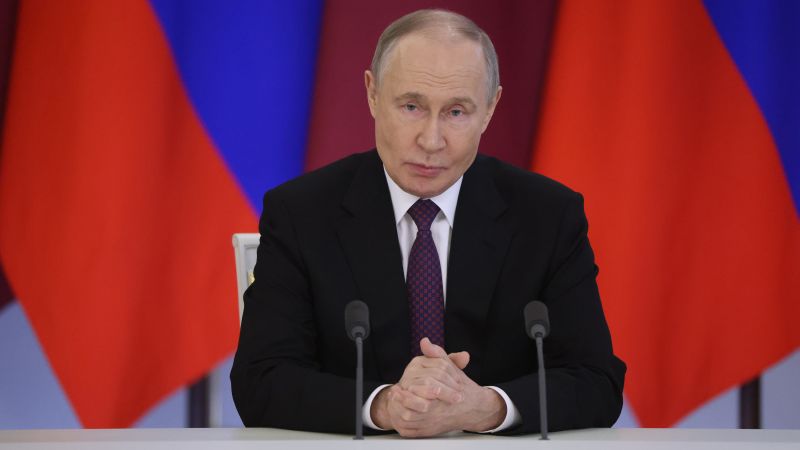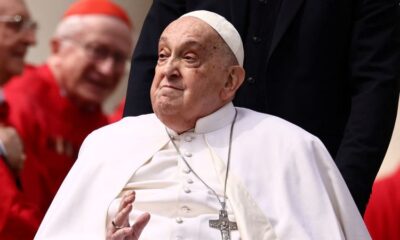Paris
CNN
—
Three years of war in Ukraine have left Europe with a hefty bill: nearly $122 billion in direct assistance, plus billions more plowed into the continent’s militaries and defense industry.
But the region has so far refused to touch the $229 billion of Russian central bank cash sitting in the European Union, frozen after Vladimir Putin’s 2022 full-scale invasion of Ukraine.
Last week, however, French lawmakers passed a non-binding resolution calling on their government to use frozen Russian assets to “finance military support to Ukraine and its reconstruction” – specifically, the assets themselves rather than just the interest they are earning.
Both the United States and Canada had already introduced legislation empowering governments to confiscate frozen Russian assets. In its final days, the Biden administration also tried to persuade European allies to confiscate immobilized Russian funds.
Some progress on that front was achieved last week, when the European Parliament agreed on a resolution to confiscate Russian frozen assets for Ukraine’s “defense and reconstruction.” The text of the resolution has not yet been voted on by the parliament’s lawmakers.
The EU is already using the interest from the frozen funds to back multi-billion-dollar loans to Ukraine. But European governments remain hesitant about confiscating the capital. In an understatement from UK Prime Minister Keir Starmer on March 15, it’s a “complicated issue.”

The concerns are twofold: economic and legal.
“We’re not touching these Russian assets,” French government spokesperson Sophie Primas told journalists last Wednesday, warning that doing so could set a dangerous precedent, discouraging foreign investment in Europe, even as the government examines legal pathways to use the funds.
A country like China, aware that it could face European sanctions if it invaded Taiwan, might be reluctant to place funds in the region, the argument goes.
Indeed, Russia has for years been moving its official funds out of the US, apparently fearful of repercussions over its aggressions in Ukraine and Georgia.
There is a precedent for this sort of US action. It seized German assets after World War II, as well as Afghan and Iraqi assets, said Professor Olena Havrylchyk, an economist at Paris’ Panthéon-Sorbonne university, adding that Moscow hadn’t had the same fear about Europe.
In recent years, Europe’s central banks have expressed concern (cloaked in diplomatic language) that seizing foreign funds could “harm the euro as a reserve currency,” Havrylchyk told CNN.
But continued support for Ukraine will carry on costing Europe money – and interest from Russia’s funds won’t cut it.
That’s a reality that European taxpayers will need to remain on board with, Havrylchyk said, if seizing Russia’s money outright is off the table.
Havrylchyk believes a nuclear-armed Russia will never agree to pay reparations as part of a peace deal, so Kyiv’s hopes for compensation must lie in funds already in the West’s hands.
“The world isn’t ruled solely by economists,” she said. “International law is above all for justice, not just property rights.”
Legally, Europe’s hesitancy over seizing – rather than just freezing – Russia’s assets stems from one of the key principles of international law: the immunity of a state’s overseas assets from seizure.
The justification for seizing the principal of Russia’s assets would therefore be all-important, Frédéric Dopagne, professor of public international law at the University of Louvain in Belgium, told CNN.
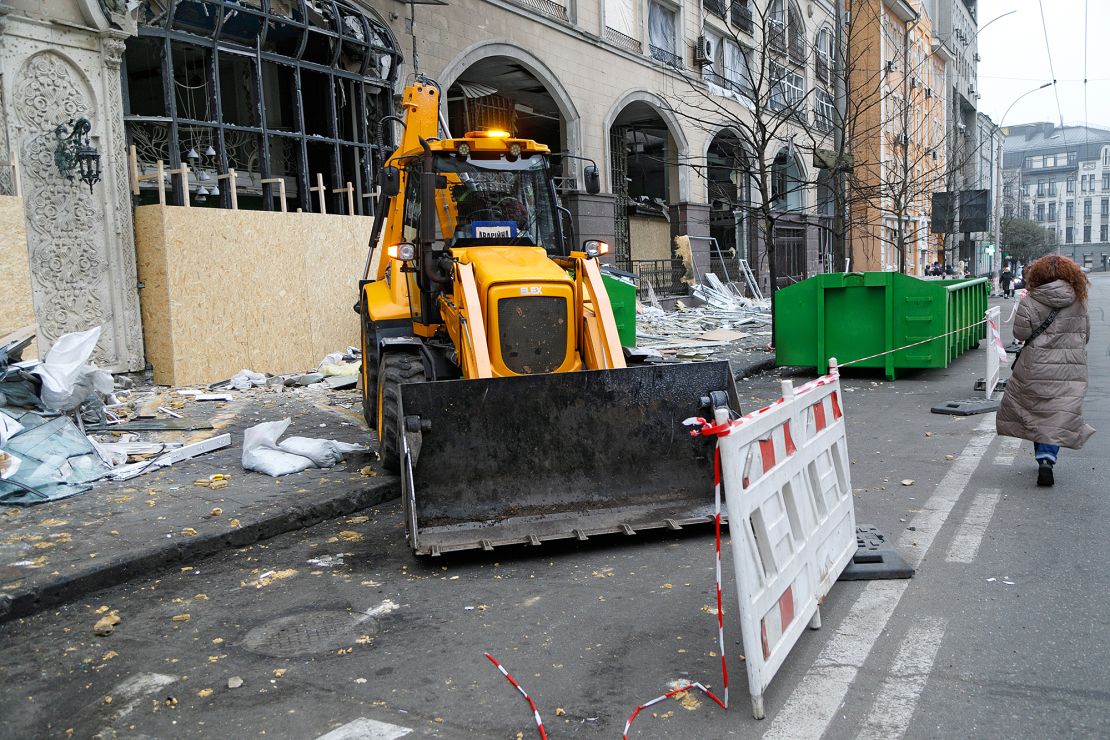
Reparations for Russia’s damage to Ukraine and bolstering Ukraine’s own defense capabilities against aggression are the strongest legal arguments Europe could use, he added.
When the US passed the 2024 bipartisan Rebuilding Economic Prosperity and Opportunity for Ukrainians Act, it justified any seizing of Russia’s assets in the US on the basis that they would be used to rebuild Ukraine. And French lawmakers debating the non-binding resolution last Wednesday voted through an amendment explicitly removing provisions to use Russian assets to fund Europe’s own defense.
With around two-thirds of all frozen Russian funds sitting in the EU, the stakes – and potential benefits – are much higher for European governments than they are for the US.
Dopagne at the University of Louvain said Europe’s hesitancy is partly due to the lack of historical precedent.
After World Wars I and II, a vanquished Germany was compelled to pay reparations through international treaties. But, with even a 30-day ceasefire off the table for Moscow, any such post-war accord with Russia is a distant prospect, Dopagne said.
So, the question for Western decision-makers on Ukraine is: “Can we really have an agreement on reparations before we’ve even got a peace treaty?” Dopagne said.
“It would be a novelty,” he added, even if it can’t be ruled out.

The arguments on either side of the debate haven’t yet reached critical mass.
States like Belgium, which holds the lion’s share of frozen Russian assets (some $193 billion, according to the Institute of Legislative Ideas, a Ukrainian think tank), remain dubious, and backing from economic powerhouses like Germany would be essential for broader European buy-in.
Any EU-wide action would almost certainly require unanimous consent from member states, an unlikely result, given the support for Russia in the Hungarian and Slovak administrations.
Officials from the Biden administration had hoped to use Russia’s frozen funds as leverage in peace negotiations, forcing Putin to the table. With Donald Trump’s enthusiastic overtures to Moscow and the first moves toward a peace deal in three years of fighting, a European seizure of Russia’s cash is more likely to kill than to aid negotiations.
For now, Moscow’s nest egg looks safely out of European pockets.

